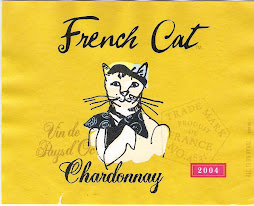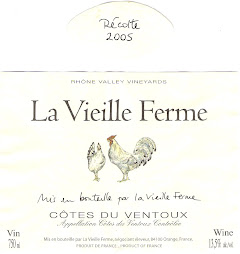I like wine, well, I love wine. And when I talk to other people, they seem to find what I have to say helpful. I am not the most knowledgeable person, and certainly, I don’t have the best palate. On the other hand, I don’t talk in jargon, and I regard drinking wine as a very fun thing to do, especially with good food and company. I have wonderful company. Also, I have been drinking, reading, thinking, and loving wine for many years. My girlfriend, Brigette, is a great cook and has a better palate, and we eat and drink and make merry as much as we can. We are usually drinking cheap wines. Cheap wine is not necessarily bad wine. So, I thought that it might be fun to talk about our wine experiences. The good and the bad. I write conversationally. I also write on many wine topics that you might not find elsewhere, hopefully, interestingly, which I will put at the side.
I will being talking about wine within a context. The problem I find with most wine columns is that I do not know anything about the writer’s tastes. The writer likes the wine or not. But, when I drink the wine I am not doing a tasting, not tasting the wine alone, with other wines, or in a supper market or wine store. I am sitting at a table eating a meal. What does the wine taste like then? So, that is what I will doing here. I am buying wines that I will eat with dinner, usually cooked by Brigette (I have to ask permission to cook, and I like to cook. I help a lot. Just tonight she said I was the best sous-chef she has ever had!) and then I will write about our experience. Brigette’s cooking is not cookbook specific. She takes ingredients and puts them together in ways that make sense to her. Often, she is not exactly sure what will result or if she will like it. She may buy ingredients that she is not sure what she is going to with them. In may ways, our entire dinners are experiments. New food, new wine, new combinations, even new techniques I didn’t know she knew. I think that she is a real chief. She has some training. And her efforts add to her understanding of food and its preparation. I get wonderful dinners. We are having a wonderful adventure.
So, I am writing about wine and food, how the wine looks, smells, tastes, in a specific context with the food, what the food is, including preparation, with pictures of the wine label, and the food. Wow, what fun. Okay?
Here is my first review:
Roncier, Pinot Noir, Tramier & Fils, Negociants, France, non-vintage; 12.5%; $9.99 Whole Foods; September, 2008.
By all accounts, some of the best wine in the world is Burgundy. The red stuff. This wine has been grown for literally centuries, in the area that has been found to best produce it. That area, unfortunately, is very small. It also produces the best when the quantities grown are intentionally limited. The number of bottles available is relatively very small. Finding Burgundy at this price is difficult to comprehend. So, how come?
A negociant is a bottler, not a grower. He buys wine from growers and does his own thing. The story on Tramier is that he buys wine left over from other bottlers. Say that you are the wine maker at a major house, and you determine the blend you want, say 40% from one plot, 33% from another, and so on. But the plots in question do not produce in the same percentages that you want to blend, so you have wine left over. You sell it to Tramier. Tramier also has a wine maker, who makes do with what he can find. Yet, he also has a repetition to maintain, even at $10 a bottle. He cannot look for real consistency from batch, but he can make it drinkable. The bottle I had was.
The color is a deep, dark red with brown overtones. Do not worry about the brown, unless a wine is completely brown. It is then vinegar. Many aged, wonderful wines may have brown tones to them. The nose is good, definitely red and inviting. It is particularly useful to taste the wine when first opened. At first the Roncier tasted very flat. After a good half-hour, the wine opened up enourmously.
We had the Roncier with a salad of romaine lettuce, tomato, onion, and a mustard vinaigrette, roasted squash with olive oil and Herbs de Provence, and a tender, mouthwatering pork loin, butterflied and grilled (on our stove), with olive oil, seasoning, and Herbs de Provence. The wine went well with the meal, including t
 he salad. It blended with the squash surprisingly nicely, although the tannins were more noticeable, and it highlighted the squashiness. It kind of stood beside the pork, but softer and more gracefully. I can’t say that it added much to the port, but it held its own, and did not detract. Sometimes that is all you can ask of a cheap wine. I was happy to have it with the meal. Brigette regarded the meal as a test, not having prepared the squash or the pork that way before. The meal was good enough to have had with a very good pinot. But I am happy with the wine as it was.
he salad. It blended with the squash surprisingly nicely, although the tannins were more noticeable, and it highlighted the squashiness. It kind of stood beside the pork, but softer and more gracefully. I can’t say that it added much to the port, but it held its own, and did not detract. Sometimes that is all you can ask of a cheap wine. I was happy to have it with the meal. Brigette regarded the meal as a test, not having prepared the squash or the pork that way before. The meal was good enough to have had with a very good pinot. But I am happy with the wine as it was.








1 comment:
Whoot!
Post a Comment